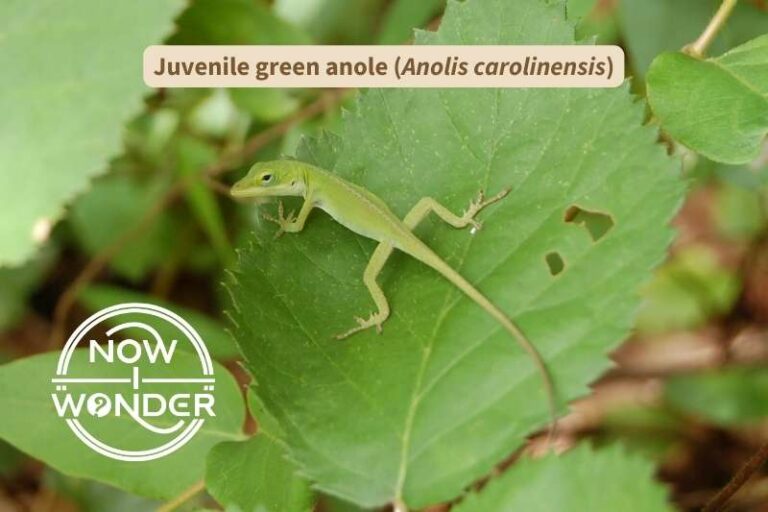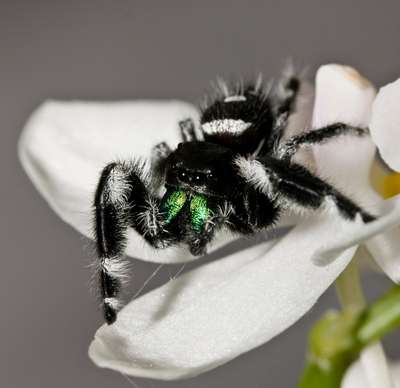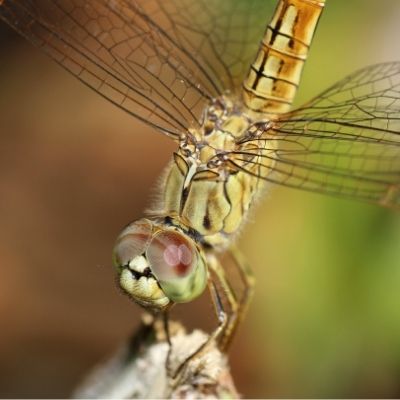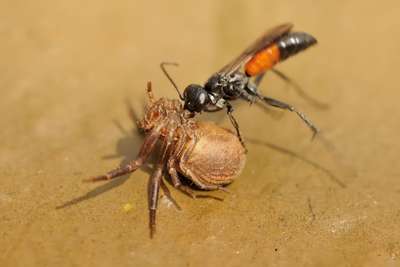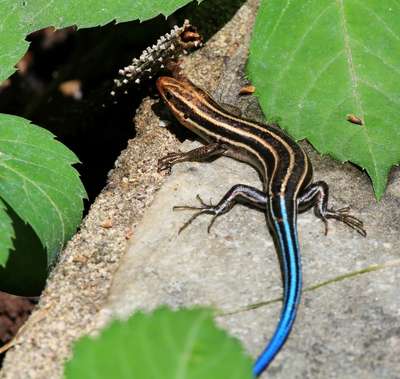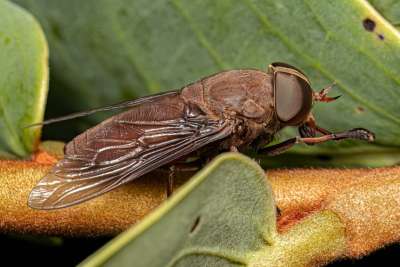Ladybugs and Japanese Beetles are two of the most commonly encountered insects in the eastern United States and are often found in the same location.
Both are easily recognizable, with the ladybug displaying its famous bright colors and patterns and the Japanese Beetle gleaming metallic bronze and green.
If you wonder how they differ beyond just their looks, this post will help!
Ladybugs are small, carnivorous beetles native to the United States and helpful to humans. Japanese Beetles are large, herbivorous beetles accidentally introduced into the United States and significant pests. There are many species of “ladybugs” but only one species known as “Japanese Beetle”.
Both are insects within Order Coleoptera but classified in different Families; ladybugs to Family Coccinellidae and Japanese Beetles to Family Scarabaeidae.
Read on to learn more about some of the significant differences between these two insects and why they matter to us.
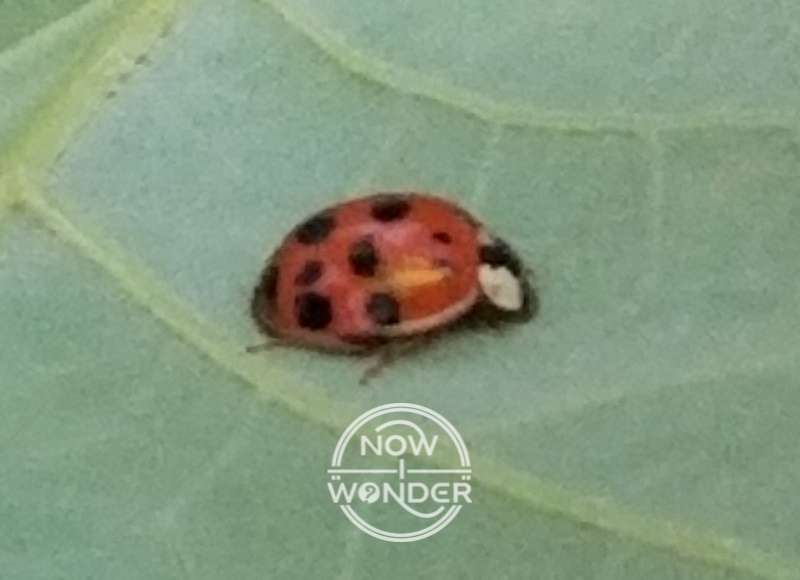
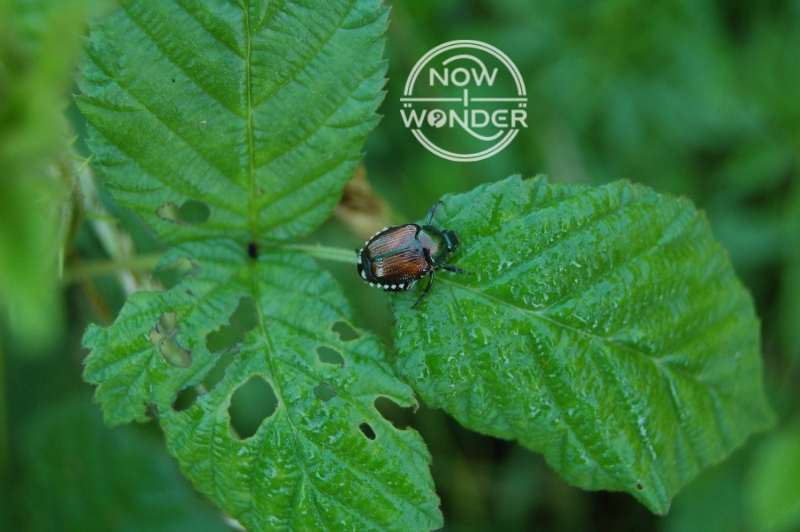
There are many “ladybugs” but only one “Japanese Beetle”
The term “ladybug” is often applied to any small insect with a brightly colored, dome shaped back made up of shiny, hardened wing sheaths that meet in a line down the center. Also known as “ladybirds” and “lady beetles”, there are more 5,000 species of ladybugs worldwide, with approximately 480 here in the United States.
In contrast, “Japanese Beetle” refers to a specific species, at least here in the United States. The insect’s scientific name is Popillia japonica and it is one of more than 30,000 worldwide species classified within Family Scarabaeidae.
Ladybug larvae are carnivores; Japanese Beetle larvae are herbivores
All ladybug larvae are carnivores, and pretty fearsome ones at that. (Cranshaw and Shetlar 2017) An encounter with a ladybug larva means big trouble if you are a spider mite, caterpillar, grub or even another ladybug larva.
These creatures actively crawl around on plants and attack any prey they can find. Some species of ladybug larvae prefer certain prey species but for the most part, they don’t pick and choose between prey species very often. A ladybug larva might prefer to eat spider mites and go on the hunt for some, but if it encounters a caterpillar on the way, it will attack.
Ladybug larvae need to take in a lot of energy to develop through the larval stage and metamorphose into the adult ladybug form; ladybugs eat more insect prey as larvae than as adults (Cranshaw and Shetlar 2017) and will consume any prey too weak to fend them off.
On the other hand, Japanese Beetle larvae live differently in every way.
Japanese Beetle larvae are all herbivores. They live under the soil as pale white grubs with yellowish brown heads and three pairs of short, jointed legs.
They wriggle their way through the soil until they find suitable plant roots and then dig in, munching quietly away in their subterranean world.
Ladybugs move a lot faster than Japanese Beetles
Japanese Beetles crawl slowly; their lifestyle as plant-eaters didn’t demand that they evolve great speed. Ladybugs, on the other hand, can move fairly quickly, given their size. Here is a video that shows a ladybug moving across an oak tree leaf.
Some ladybugs change their behavior as they age; Japanese Beetles don’t
Many people – especially those who garden – are aware that ladybugs are predators. Ladybugs have a great reputation amongst anyone who has ever tried to grow roses or a vegetable garden because they eat huge numbers of aphids, which are one of the major plant pests that gardeners battle.
As noted above, all ladybug larvae are predators – 100% of ladybug species actively hunt prey when they are young. But a strange thing happens to some species when they metamorphose from their larval form to their adult form. They change from pretty impressive predators to completely nonthreatening plant or fungus eaters.
While most adult ladybugs preserve the predatory lifestyle they had in their larval stage, some species of ladybugs emerge from the pupa to feed on leaves, pollen, flower nectar or fungus. It’s a complete change in lifestyle that often goes unremarked.
On the other hand, Japanese Beetle behavior is consistent across their lifespan. They start and end their lives as herbivores.
Despite massive changes in their body forms from larval to adult, they always eat plants. The grubs start damaging plants from their underground position, attacking delicate plant roots and interfering with the plant’s ability to absorb nutrients.
Once the beetle larvae pupate, they dig themselves out of the ground, crawl or fly onto the plant’s leaves and start chewing.
Japanese Beetles are as voracious in their eating habits as ladybugs and can do tremendous damage to a plant in a short period of time. They “skeletonize” leaves by eating the soft tissue from between the veins, which drastically reduces a plant’s ability to photosynthesize.
Do ladybugs eat Japanese Beetles?
Since ladybugs are predators that attack creatures that feed on plants, and Japanese Beetles are creatures notorious for feeding on plants, you might wonder if ladybugs attack Japanese Beetles.
Ladybugs do not attack Japanese Beetles because the beetles are much bigger than the ladybugs. Japanese Beetles are about the size of an American quarter coin (18-29mm or 0.7-1.1in), with females usually being larger than males.
Ladybugs species range in size from 1-10mm. One of the most common North American species, the Convergent Ladybug (Hippodamia convergens) is only about the size of pencil eraser (4.5-6.5mm or 0.18-0.25in).
If a Japanese Beetle were weakened in some way, a ladybug might consume it as an opportunistic meal. But in general, Japanese Beetle grubs are safe from ladybugs because they live in the ground and the adults are safe because of their size, even if both exist in close proximity on the same plant.

Ladybugs have defenses against predators; Japanese Beetles don’t
While relative size protects Japanese Beetles from predation by carnivorous ladybugs, they aren’t so lucky when it comes to other predators.
Japanese Beetles are on the menu for a large variety of bigger predators, including birds, skunks, raccoons, moles, spiders, lizards, two species of tiphiid wasps and one species of tachinid fly. (Held and Potter 2009)
As with many insects, the beetles ensure survival into the next generation primarily through sheer numbers, not through any special talent for escape or defense. An adult female will lay 40-60 eggs in a reproductive season (Held and Potter 2009) but this only supports the population as a whole. An unlucky Japanese Beetle could be eaten at any time.
In contrast, ladybugs have specific anti-predator defenses.
Their bright coloration is not sheer ornamentation but serves a life and death purpose and is referred to as “aposematic coloration”.
Ladybugs accumulate toxins in their bodies that make them taste unappealing to predators and in some cases can even make a predator sick. They evolved their bright colors as a warning signal to predators.
Many insects exhibit “aposematic coloration” and some are just bluffing. But not ladybugs – their warning is legitimate; many predators know it so look elsewhere for their meals.
If a predator ignores the colored warning, ladybugs have another trick to keep from being eaten. When under attack, a ladybug will ooze a foul-smelling and tasting liquid from their leg joints. This is called “reflex bleeding” and is defense tactic displayed by several different insect families.
A predator must be small enough and sensitive enough for this liquid to deter an attack. But in some ladybug species, it is pungent enough that even human noses can detect the smell.
While no defense in nature is one hundred percent effective, a ladybug’s reflex bleeding can be effective much of the time, even against such dangerous predators as spiders.
In contrast, Japanese Beetles never evolved reflex bleeding and so are more vulnerable to predation than ladybugs.
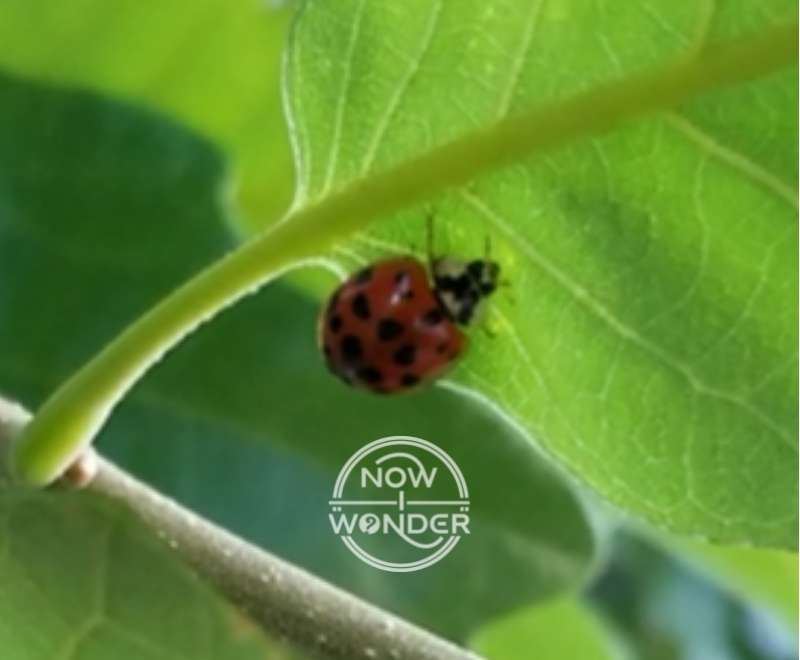
Ladybugs are heroes; Japanese Beetles are pests
Ladybugs enjoy one of the best reputations of any insect group because they are effective predators of aphids and other garden pests,.
Gardeners are generally happy to see ladybugs amongst their plants and several experiments that introduced ladybugs as biological controls to reduce pest populations have been very successful.
One famous example of introducing ladybugs as biological pest controls happened in California in 1889. A species known as the Vedalia Ladybird Beetle (Rhodolia cardinalis) was released to eradicate the cottony-cushion scale insect which had infested the citrus groves after being accidentally imported from Australia. (Lagasse 2018)
While still recognized for their value in pest control, ladybugs have lost some of their popularity as biological control agents in recent years. In some areas, they are actually considered pests.
This is due in large part to the Asian Ladybug (Harmonia axyridis).
Also known as the Harlequin Ladybug, it was introduced to the United States to control agricultural pests but now causes problems the scientists didn’t anticipate. In particular, they have a habit of swarming and overwintering in gigantic groups within buildings.
Huge numbers of these ladybugs have infested homes and businesses in recent years. Beyond the distress that large numbers of insects invading a living space can cause humans, the reflex bleeding exhibited by these insects stain walls, furnishing and clothes. Additionally, many people are allergic to them and some severe reactions have been reported.
On the other hand, very few people have ever admired Japanese Beetles or wanted them around.
They are widespread across the eastern and central United States – especially the northeastern portion – and they spread to this current distribution all on their own.
No one knows for sure how Japanese Beetles arrived in the continental United States from their native Japan but it was surely by accident. Scientists think that some of the beetles or eggs hitched rides within nursery plants imported from overseas to the U.S around 1916.
Regardless of how they arrived, there is no doubt that the beetles found their new home much to their liking.
“By 2007, the beetle was established in all states east of the Mississippi River except for Florida, and in the central United States as far west as Minnesota, Nebraska, Kansas, and eastern Colorado. It also has spread north into southern Ontario and Quebec, Canada, and is established on Terceira Island (Azores, Portugal) where it escaped from a U.S. air base.” (Held and Potter 2009)
(Held and Potter 2009)
Every year, hundreds of millions of dollars are spent across the United States trying to control the population and limit their spread (Held and Potter 2009), with varying degrees of success.
Overall, ladybugs continue to be much more popular than Japanese Beetles. However, experts now consider the possible introduction of ladybugs as biological controls more cautiously and ladybugs are not as universally beloved as they once were.
Despite being cousins within Order Coleoptera, ladybugs and Japanese Beetles are very different insects. The fact that the natural behavior of one is more helpful to humans than that of the other is mere happenstance – a lucky one for the ladybugs, an unlucky one for the Japanese Beetles.
Related Now I Wonder Posts
For more about beetles in order Coleoptera, check out these other Now I Wonder posts:
- What eats Japanese beetles?
- June Bugs vs. Japanese Beetles: What’s the difference?
- What is the biggest beetle in North Carolina?
For information about insects in general, check out these other Now I Wonder posts:
- Do insects ever eat spiders? Part 1: Attacks from the air
- Do insects ever eat spiders? Part 2: Attacks from the ground
- Do insects have blood?
References
Cranshaw, Whitney and Shetlar, David, 2nd ed. 2017. Garden Insects of North America. Princeton University Press.
Held, David W. and Potter, Daniel A. 2nd ed. 2009. Japanese Beetle; Encyclopedia of Insects. Elsevier Science & Technology.
Lagasse, Paul. 8th ed. 2018. Ladybird beetle; Columbia Encyclopedia. Columbia University.

